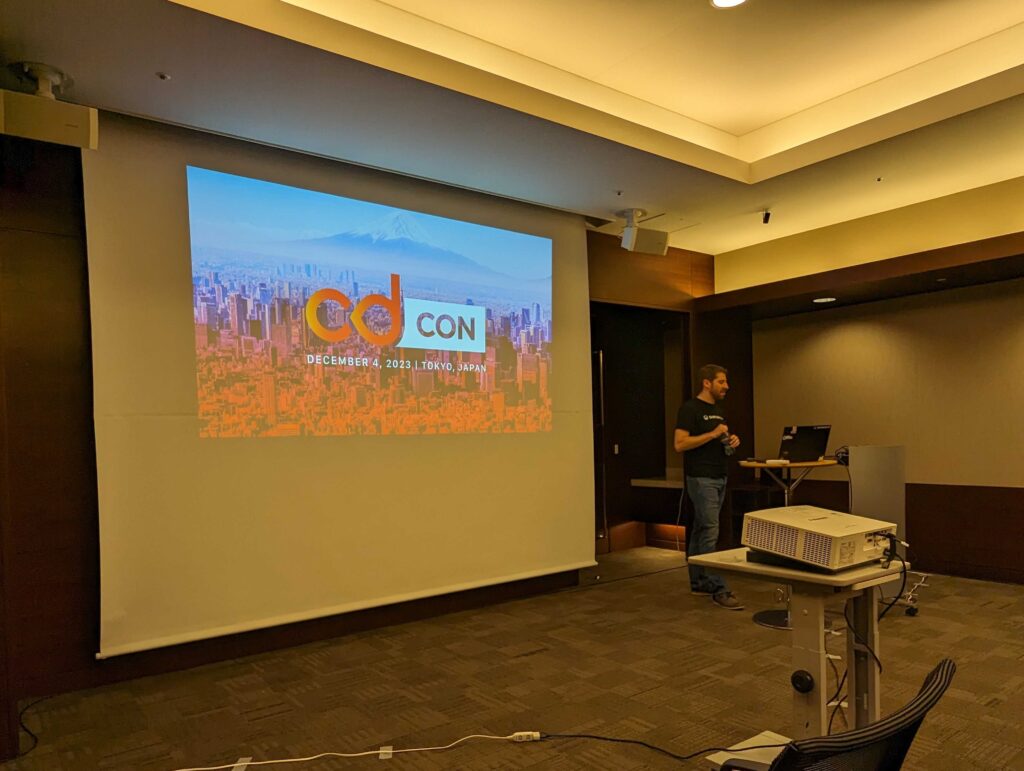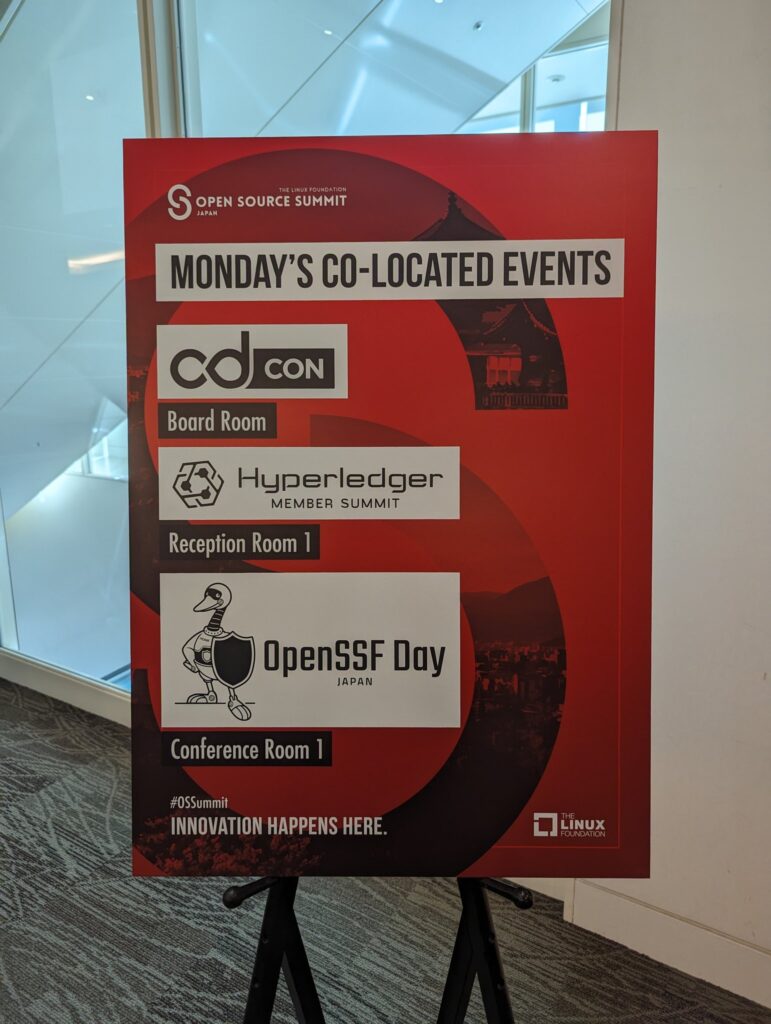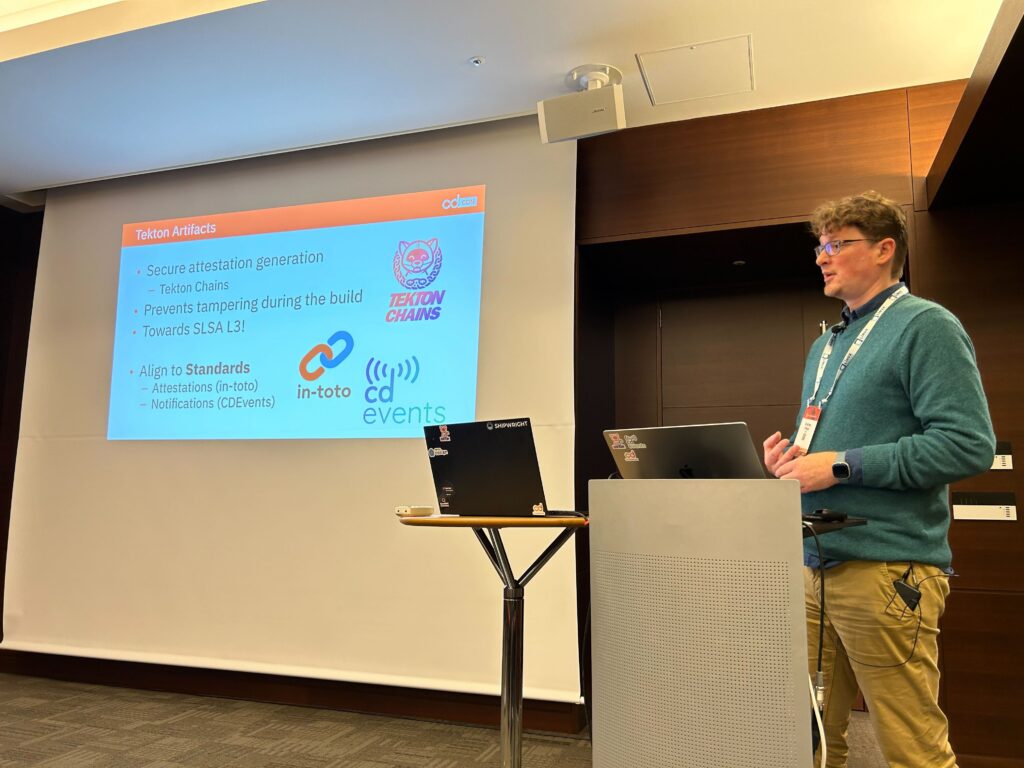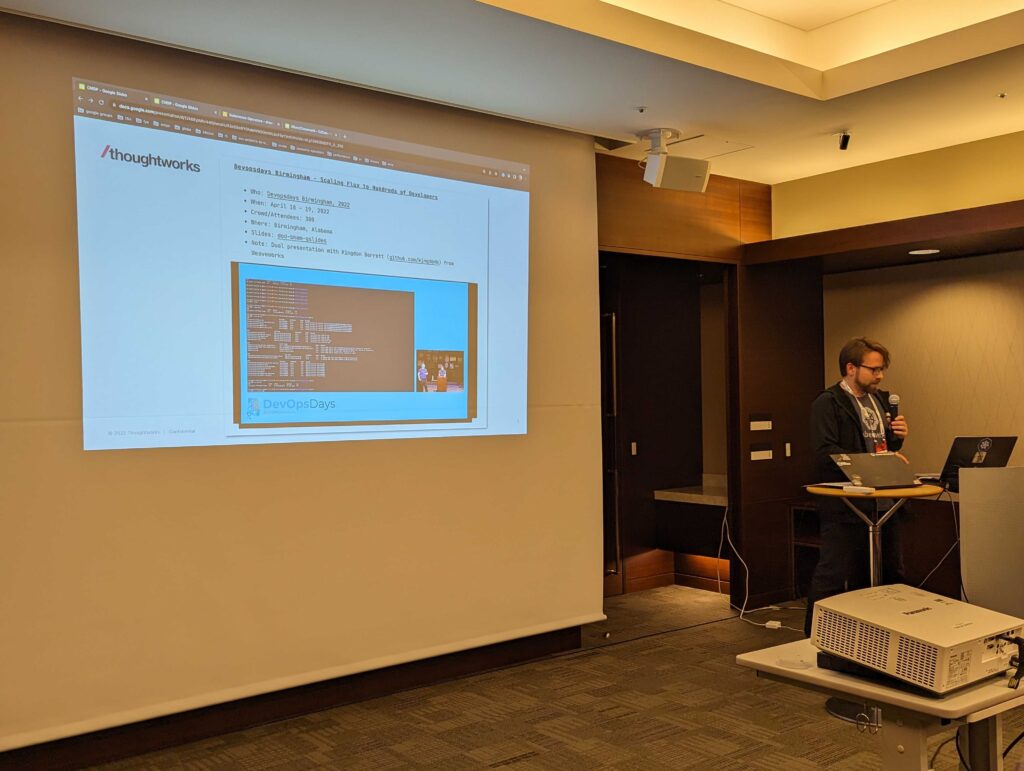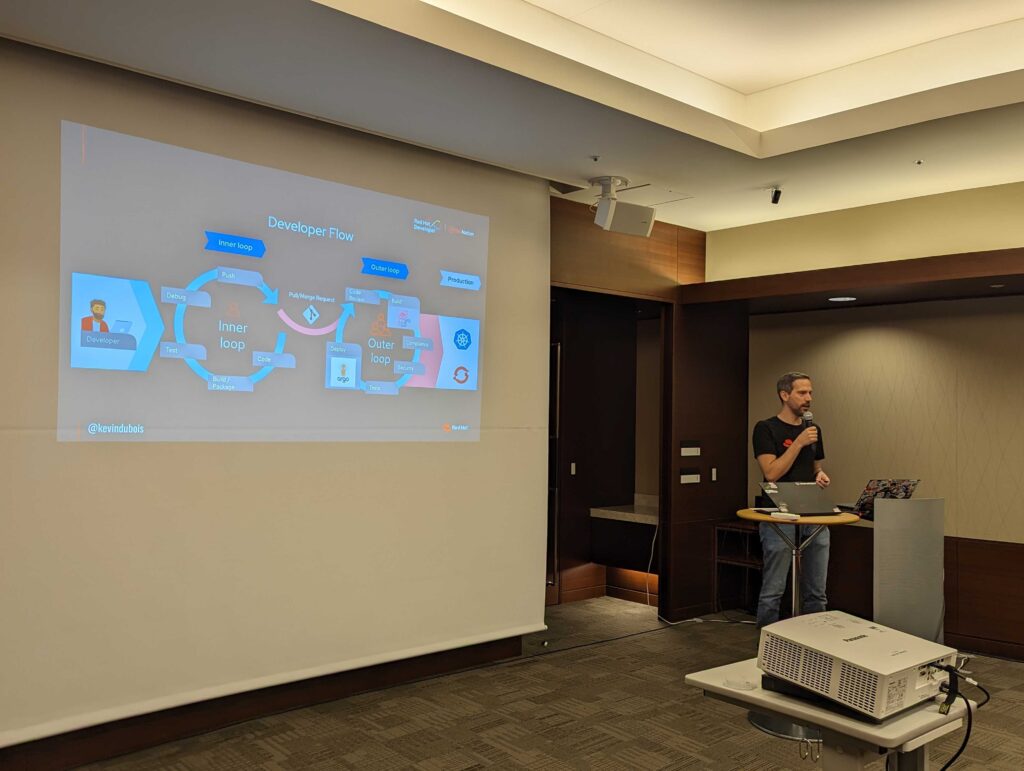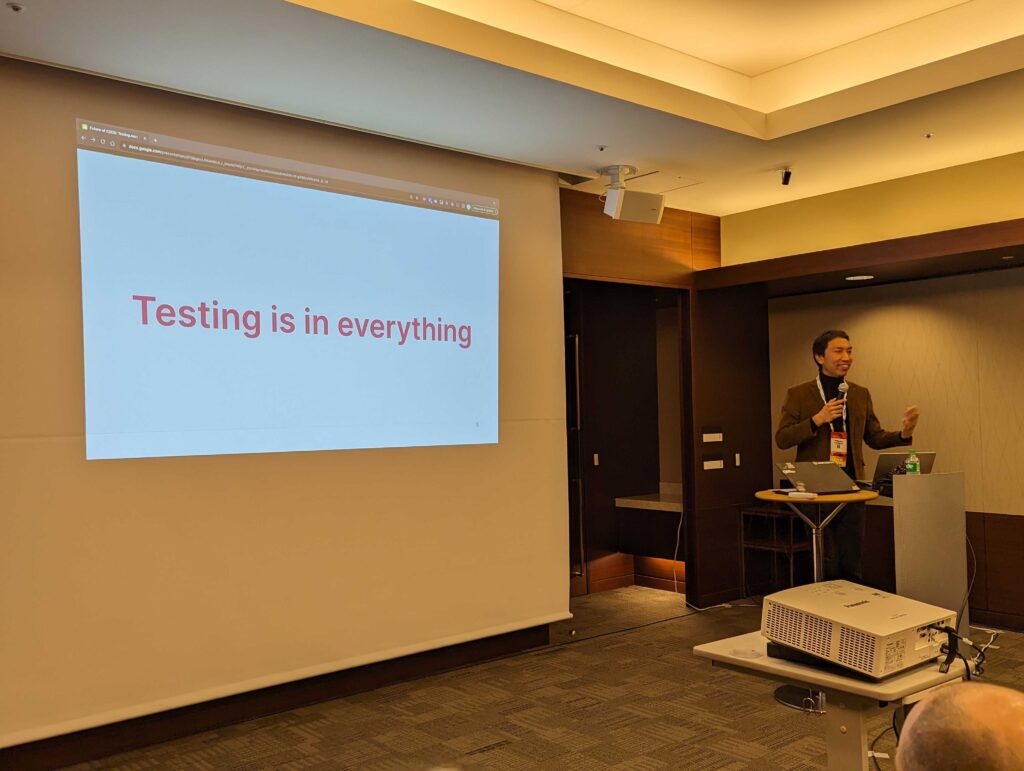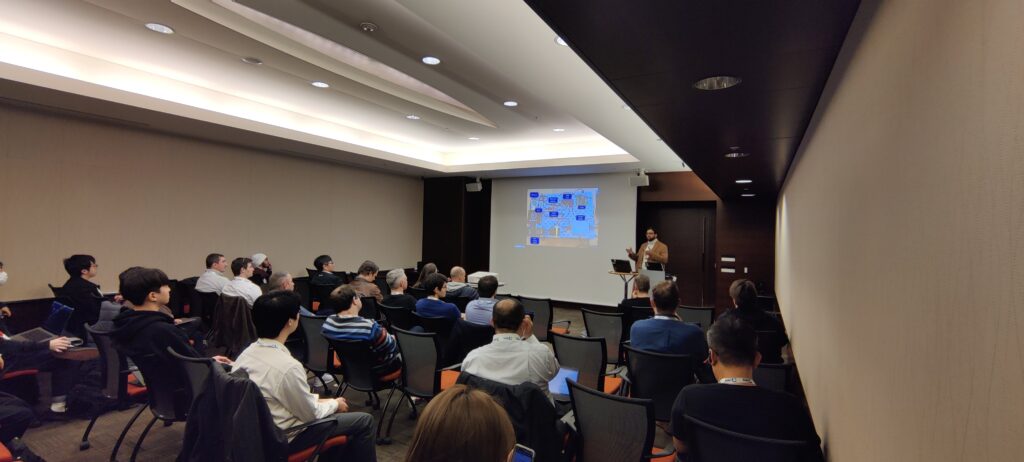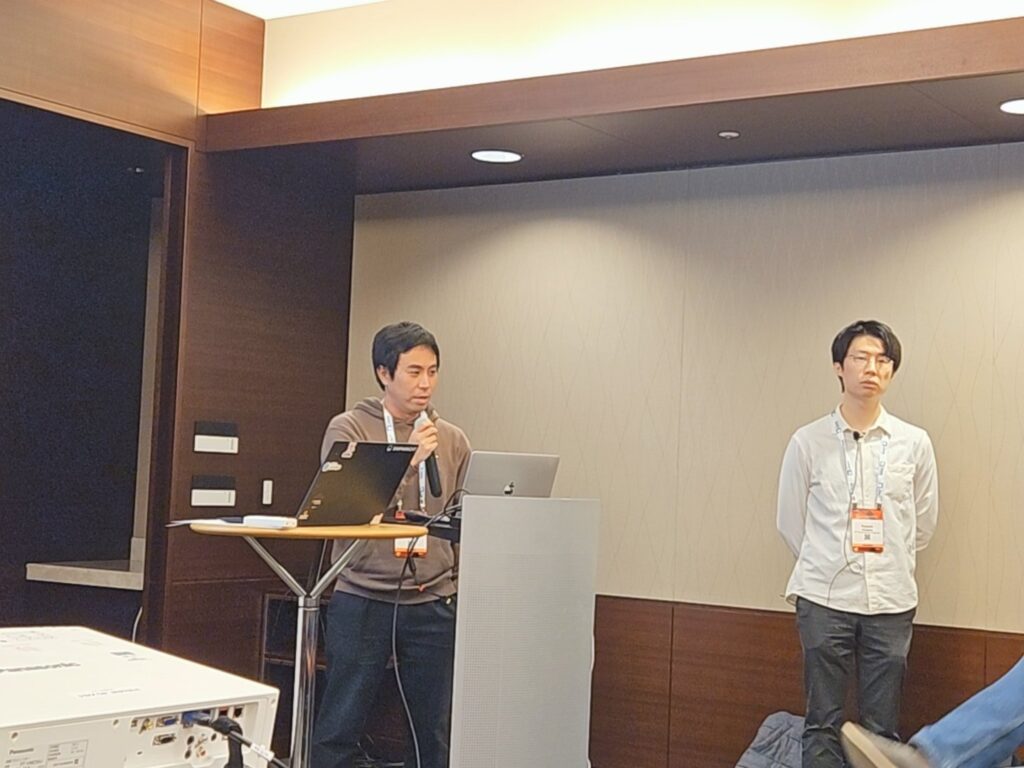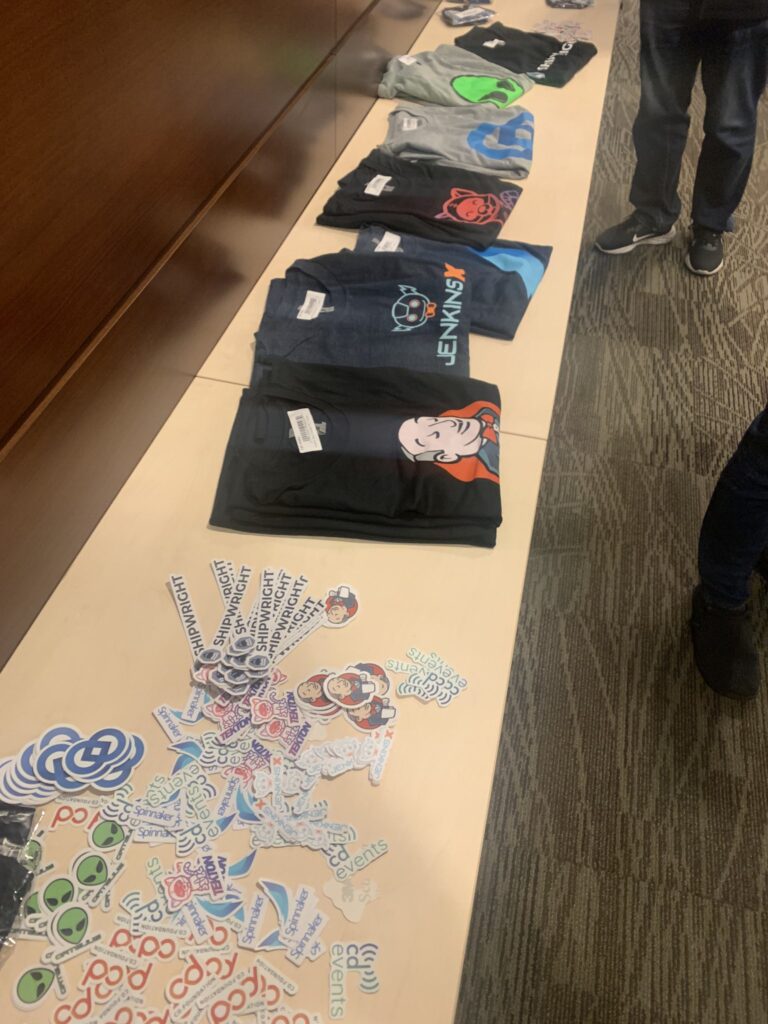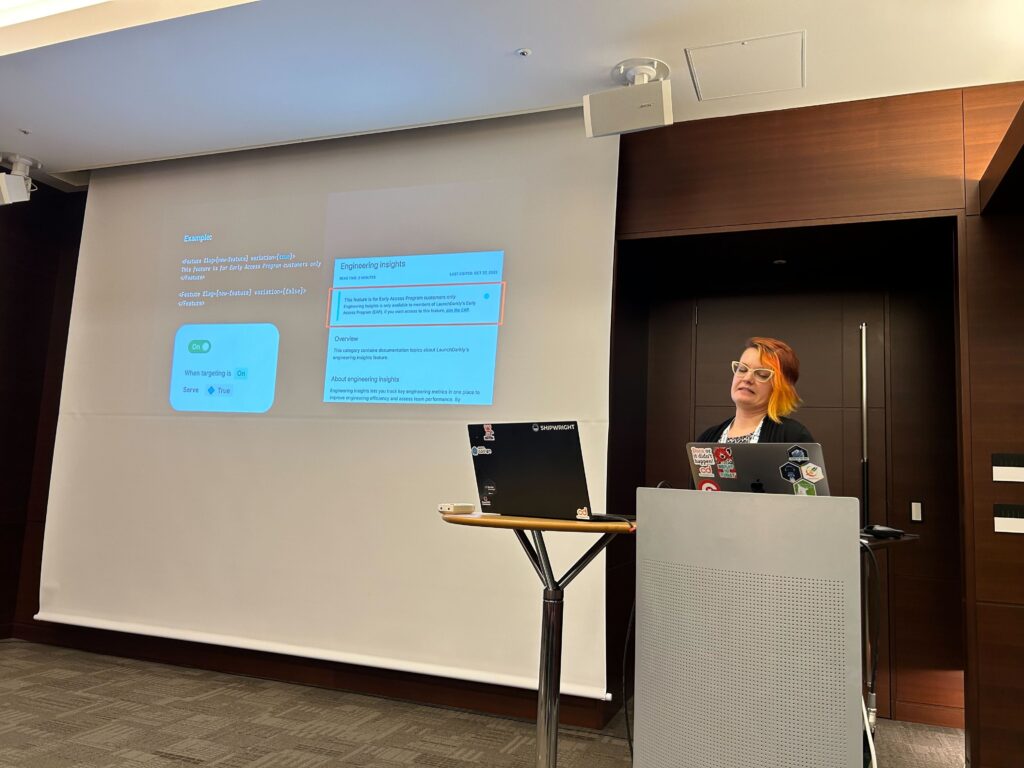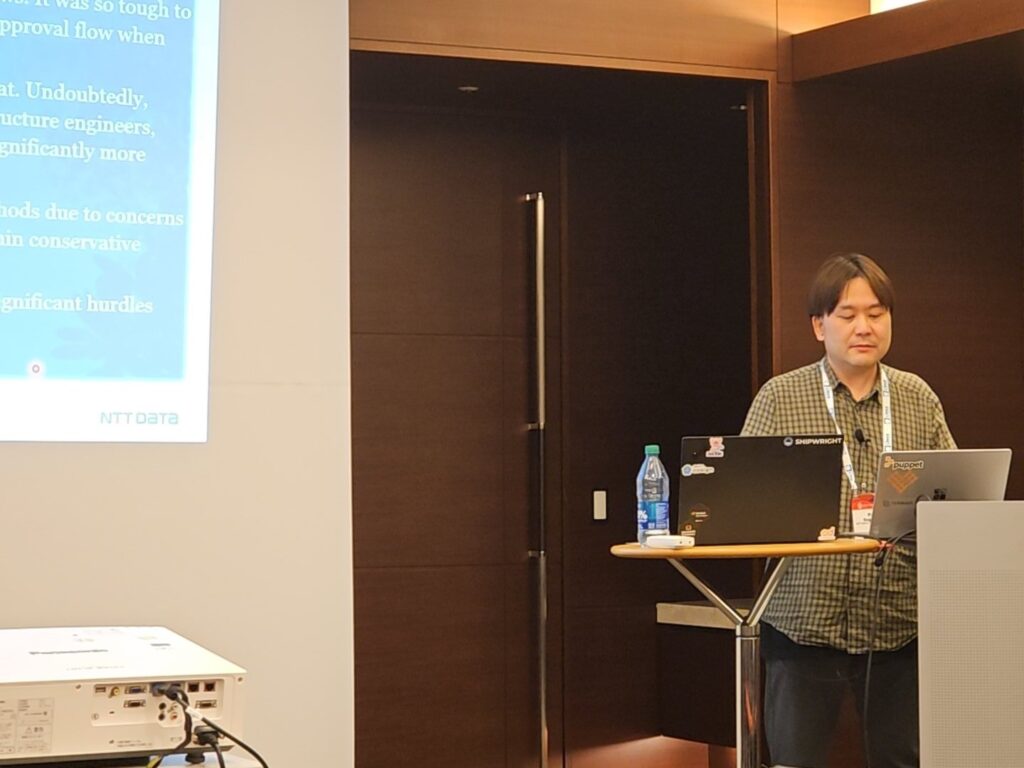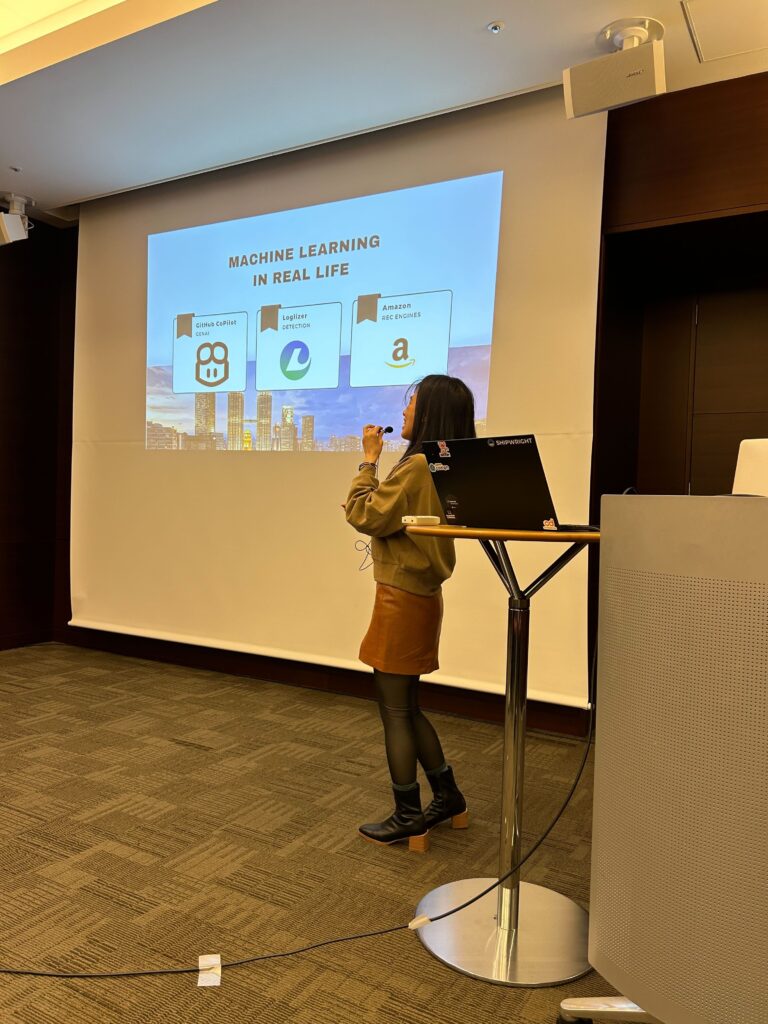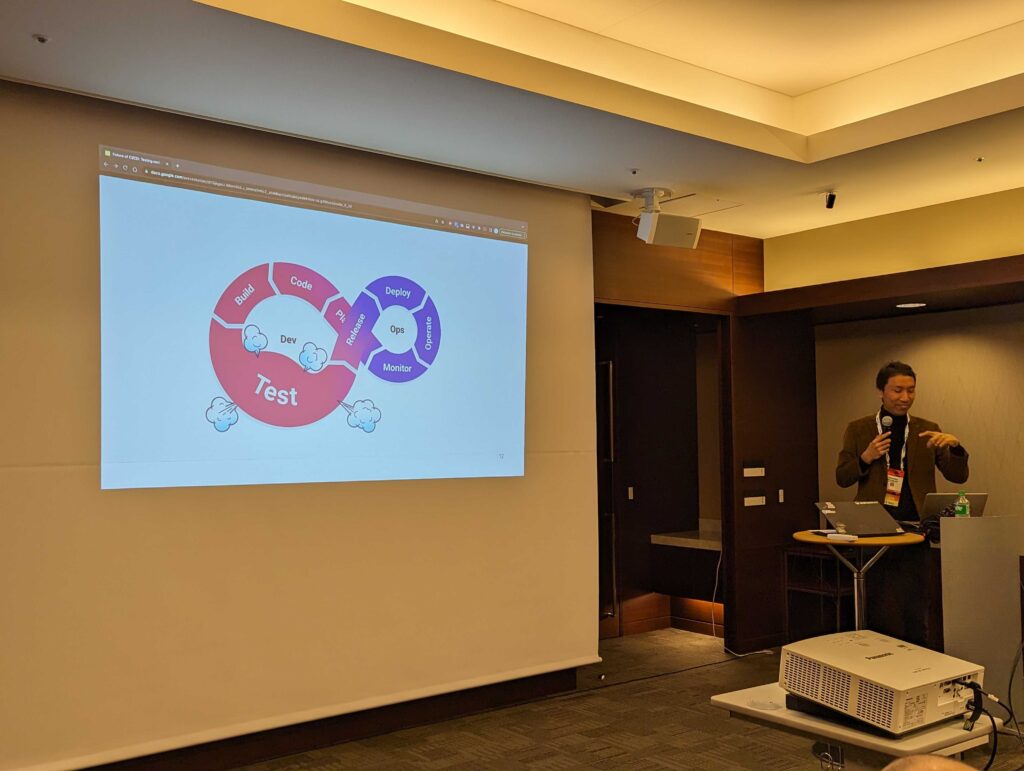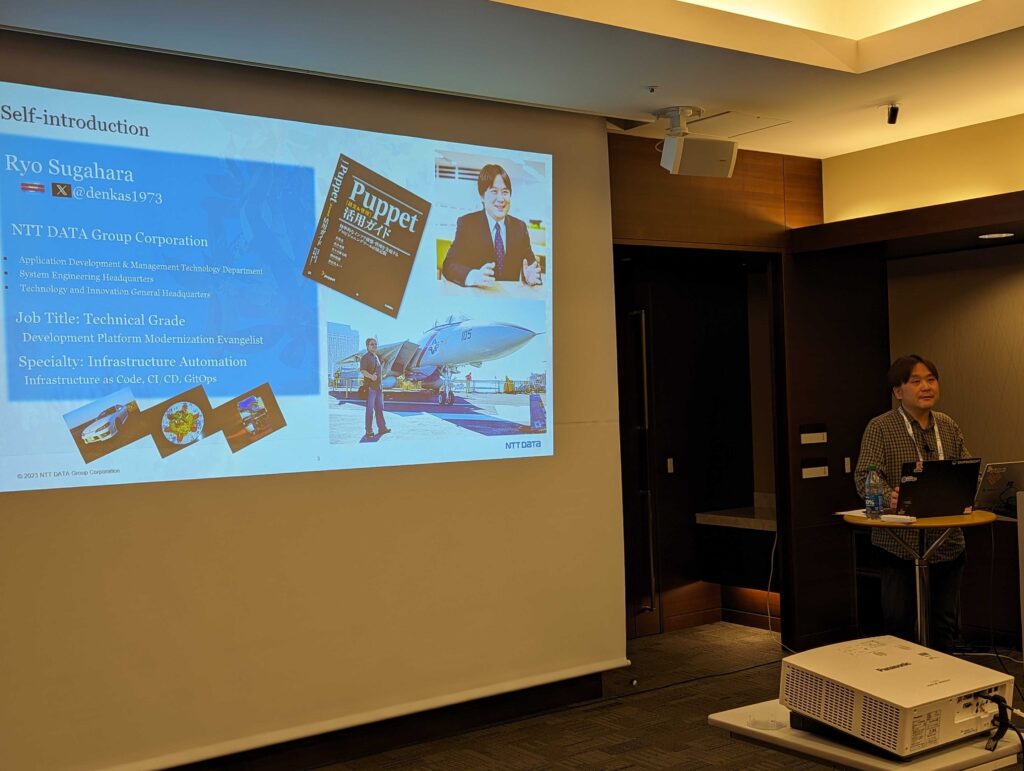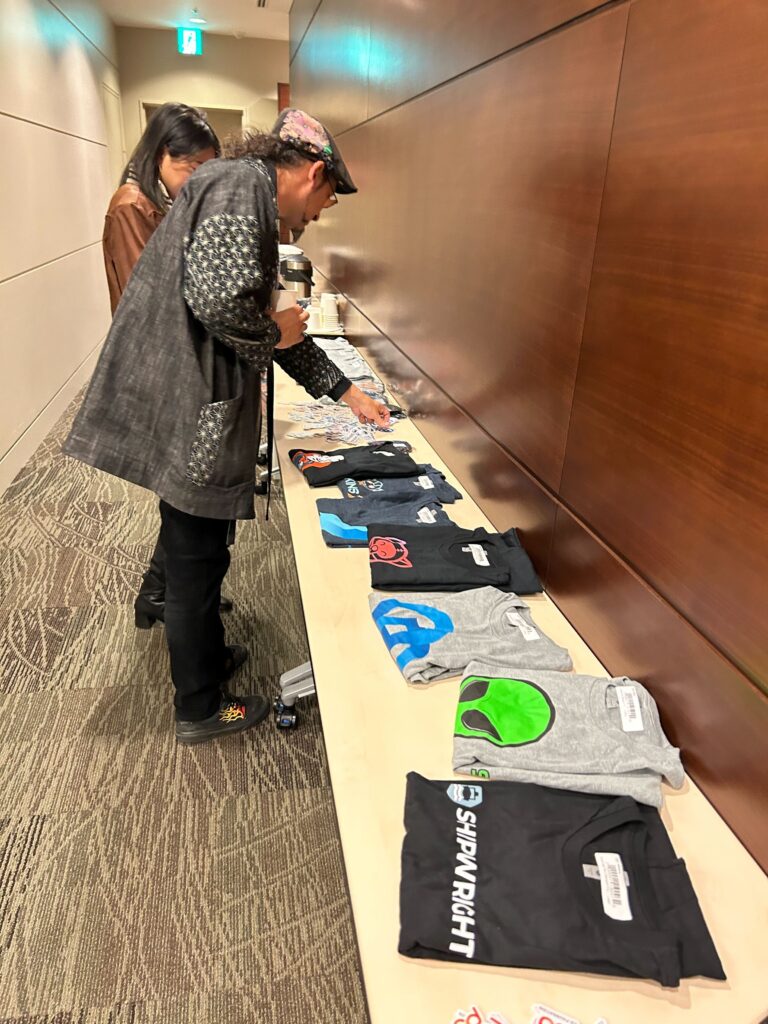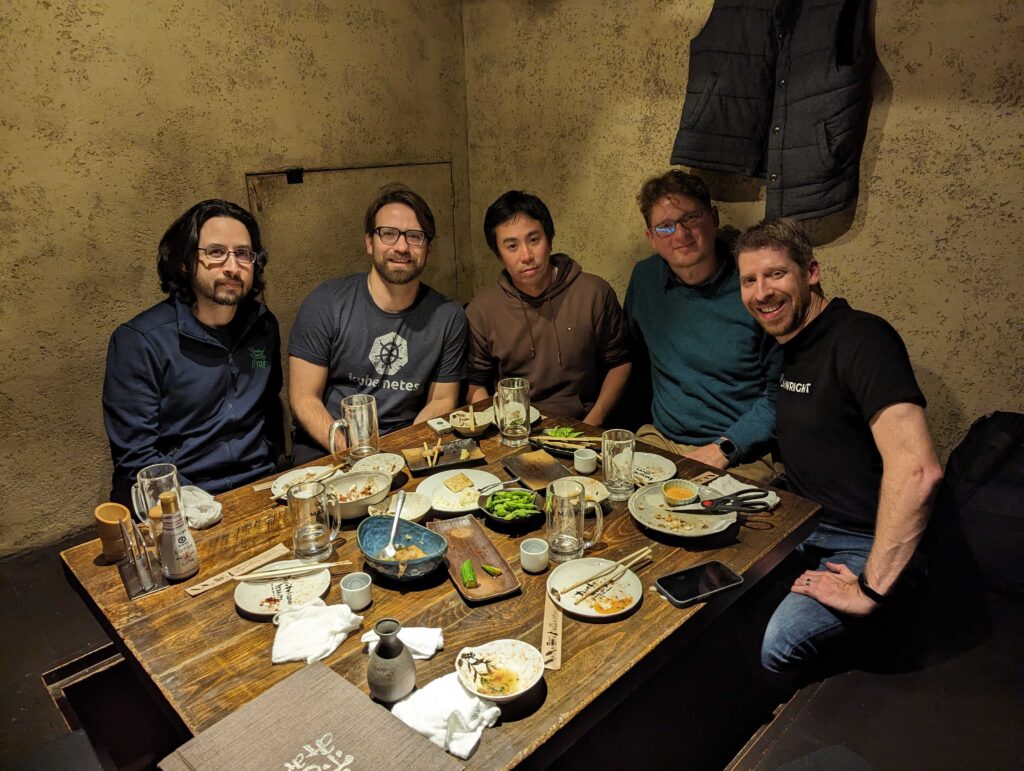Contributed by Adam Kaplan, Red Hat (cdCon Japan Program Chair)

Andrea Frittoli and I spent last week at cdCon Japan and Open Source Summit Japan, hosted in the always inspiring Tokyo. This was my first trip to Asia, let alone Japan, and it was incredible to see the mix of tradition and innovation at play in the conference and throughout the city.
After a bit of sightseeing on Sunday, we kicked off the week with cdCon Japan, a full day of sessions co-located with Open Source Summit Japan. This was the first event the CD Foundation ever hosted in Japan, and was an opportunity for us to engage with practitioners and developers in a place where adoption of continuous integration and delivery has proved challenging. As chair of the program committee, I was happy to serve as master of ceremonies.
Event Summary
We kicked off the event with a fantastic keynote from the one and only Kosuke Kawaguchi, CEO of Launchable and the creator of Jenkins. He spoke at length on the “happy mass” that accumulates as teams add more tests to their application pipelines, and the potential of AI and other innovations to identify the “rusty” tests that can grind a team’s productivity to a halt. This was followed by a fun audience-driven race car game hosted by Kevin Dubois at Red Hat, built by Tekton and deployed with ArgoCD. After our first round, Kevin showed us how he could build and deploy a new game feature with these tools, all live and in real time. The first morning session concluded with an overview of cloud-native delivery patterns by Bryan Oliver, Principal Architect at Thoughtworks. Bryan discussed practices beyond CI and GitOps, introducing the audience in Japan to the operator pattern and admission controllers that can “enforce compliance at the point of change.”
After breaking for coffee and tea, Ryo Sugahara of NTT Data presented his case study of introducing GitOps to a conservative, risk-averse organization. His fable of the five monkeys helped me reflect on the “mysterious rules” that emerge over time within teams, and he provided sage advice on how innovators can find the ideal kaizen state of continuous improvement. This was also one of Ryo’s first public speaking engagements in English, and I greatly appreciate the effort and bravery he put into this talk (for those who are not aware, English is a particularly challenging language for native Japanese to speak).
Andrea Frittoli followed Ryo with an update from the Tekton Data Interface working group, led by Jerop Kipruto who sadly couldn’t make it to Tokyo. Their work – which has spanned more than two years – will allow Tekton pipelines to verify the data flowing in and out of each step, moving the project closer to SLSA 3 build-level compliance. The morning session then concluded with Ember Stevens of LaunchDarkly, who applied the ideas of feature flags and continuous delivery to technical documentation. This talk was very dear to my heart – one of my earliest contributions to open source was a Kubernetes docs pull request, merged by a rather notable maintainer.
After breaking for lunch, Tiffany Jachja of Autodesk highlighted the challenges and opportunities of using machine learning in CI/CD flows. One of the biggest takeaways I got from her talk was the Loglizer toolkit that could help teams use machine learning to find and remediate failing tests. Up next was Mark Mishaev of Checkmarx, who tried to break the misaligned incentives of development and security teams by framing DevSecOps in terms of risk analysis and management. An important point he highlighted was meeting developers where they live – ideally at the point of code change! Taking us into the afternoon coffee break was Vipul Gupta, who we invited back to dive deep into how his team at BalenaOS tests over 100 different flavors of their operating system for embedded devices. There was a lot of truly remarkable open source technology on display, all orchestrated by Jenkins and their own open source software (and hardware!) tool, Autokit.
Bringing us home were Jun Makishi and Kazuki Aizawa, who showcased the evolution of “golden” Tekton Pipelines managed by the NTT Communications Platform Engineering team. Notable was their use of the Cue programming language to balance stability and flexibility across teams, and their own custom operator for Tekton deployments. This was followed by Andrea Frittoli taking the stage again, introducing CDEvents to Japan and highlighting its role in the CI/CD ecosystem. The most significant news he delivered was the adoption of CDEvents by several open source projects, including Tekton, Harbor, Argo, and Flux.
After a long day of learning and networking, I closed the conference with a fast run-through of what software foundations like the CD Foundation, Linux Foundation, and others do to support and sustain open source projects. This included our collaboration with the CNCF that combined cdCon + GitOpsCon in Vancouver last Spring, and announcing the call for proposals for cdCon 2024 in Seattle April 16–18!
I want to thank my colleagues on the program committee for putting together a fantastic set of talks. This was perhaps the most diverse group of people I ever had the pleasure of working with professionally – and I would do it again in a heartbeat. I wish they all could have been there in person. Most attendees stayed for the whole day, and in between sessions the “hallway track” was buzzing with excitement. Sadly recordings will not be available, however, the links to the slides and materials are available on the program schedule.
Note – Vipul’s slides for “Testing 100s of OS Images with Jenkins” are hosted on slides.com: https://slides.com/vipulgupta2048/cdcon-japan-2023.
Photo Gallery
